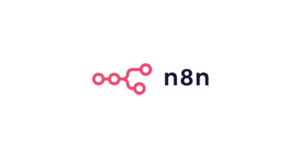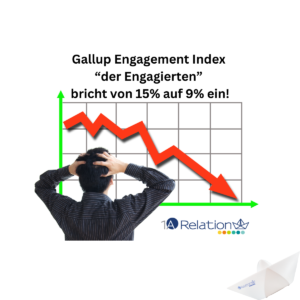How is the CRM market developing?
CRM market: Currently we are following three market research companies, which comment on the market figures in Customer Relationship Management. These are Gartner, Forrester and IDC. Other companies also publish figures. But these are not publicly available.
The topic of CRM software is usually defined from the customers’ point of view as a system for marketing, sales and service. All in all, there is a lot of information about this. Who does not know them the Waves or Magic Quadrants. Every provider is keen to appear with his system in one of these publications. A lot of money is also paid for the product to be tested and the information from the audits to be published in detail.
The table of contents
1.) The most recent information on market developments is from the end of May or from IDC:
IDC reports after a recent measurement (Worldwide Semiannual Software Tracker) that the cake for Salesforce (SFC) has increased once again. For the year 2019 Salesforce is now at 18.4%. SAP (5.3 %) and Oracle (5.2 %) have practically equal shares. Then Microsoft (3.7%) and Adobe (3.6%) will follow. If the figures are to be believed, the Walldorf and Oracle have lost shares and Microsoft and Adobe have gained slightly.

According to IDC, how does the development of sales look like?
If we look at the development from 2015 to 2019, Salesforce has increased its share from about 12/13% to 18.4%, which would be an increase of about 50%. SAP and Oracle have lost from about 7% to 5.3% and 5.2% respectively, which would be a loss of about 30%. Microsoft and Adobe, however, were only able to gain a few shares.
All in all, SFC has as big a share of the cake as all other 4 players together.
Where, in which countries, is Salesforce the market leader?
In addition to being the world’s number one CRM vendor, Salesforce is also the number one customer relationship program leader in North America, Western Europe, and Asia Pacific (including Japan).
According to the Muuuh Group study, SAP (25%) is the leader in Germany. It is followed by Microsoft (19 %), various in-house developments (17 %) and then SFC with approx. 11 %).
SAP is also likely to be ahead in the European market analysis for CRM software.
2.) Worldwide revenue development of Salesforce until 2019 – comparison with SAP, Microsoft, Adobe and Oracle
It was, is and remains a success story. The CRM software provider salesforce.com closed the 2019 fiscal year with sales of $13.3 billion.
How high is the 2019 revenue of Salesforce, SAP, Microsoft, Adobe, and Oracle in comparison?
Of course, it hasn’t just been making CRM software for a long time now, but the growth is coming from a very extensive range of – as the Americans would say – MarTech software.
That includes CRM software. With the acquisition of, for example, Mulesoft (CDP) or Tableau (BI), Salesforce is migrating to a full-service provider.
When I found the numbers on Statista (unfortunately only available with an account), I thought, this development is such a beautiful curve, as you can hardly present it more beautiful mathematically. The statistics show the sales development of the company Salesforce from 2001 to 2019ab. de.statista.com/statistik/daten/studie/740101/umfrage/umsatz-des-unternehmens-salesforce-weltweit/. Public statistics for the years 2014 to 2019 and including a forecast for 2020 are available here Finanzen.net.
In 2019, SAP will generate revenue of €27.55 billion, which is approximately $29.77 billion for comparison.
Adobe is at 11.2 billion US dollars. Oracle is at 39.5 billion US dollars. Microsoft is at 125.84 billion US dollars.
The figures are of course not comparable. Microsoft’s figure covers a different range of products and services than those of SAP, Adobe, etc. But the market capitalization shows how valuable Salesforce and Adobe have become. SAP has significantly more revenue, but Adobe and Salesforce have a much better rating per revenue. This shows that SAP still has some tidying up to do (from the analysts’ point of view).
2019 sales revenue of Salesforce SAP Microsoft Adobe and Oracle
| Turnover in 2019 in billions of US dollars |
Market capitalization in billion euros (as of 06.04.2020) |
||
| SAP | 29,8 | 119 | |
| Microsoft | 125,8 | 1.008 | |
| Salesforce | 13,3 | 111 | |
| Adobe | 11,2 | 130 | |
| Oracle | 39,5 | 145 | |
| SugarCRM | n.a. | n.a. |
3.) The CRM market continues to grow from 2017 to 2018 – from 41.7 to 48.2 billion US dollars (source: Gartner)
The CRM market continues to grow. According to market researcher Gartner, global sales of customer experience and relationship management systems (CRM) will grow by 15.6% in 2018. In figures: from US$41.7 billion in 2017 to US$48.2 billion in 2018.
In the area of enterprise application software, CRM has already overtaken the area of database management systems (DBMS) in terms of sales in 2017. The Customer Relationship Management category is now the fastest growing division in the field – the CRM offering continues to grow. SaaS offerings are the undisputed driver here – at 72.9 %. Gartner expects this area to grow by 75% in 2019.
Among the individual providers of CRM software, Salesforce is the undisputed leader with a market share of 19.5 percent – here the Big Five 2018 compared to 2017:

4.) Salesforce has twice the market share of SAP – Gartner’s CRM market development for 2018
How will the supplier market for CRM programs be composed in 2018? How will the supplier market change in 2017? The colleagues at Gartner estimate the global market figures. What does that mean for the user or decision-maker?
The most important at a glance
Salesforce will continue to dominate the global CRM market in 2018 with a cake share of approximately 19.5%. This is more than double that of competitor SAP with a market share of approx. 8.3 %. If you consider the acquisitions (tableau) of Salesforce, Salesforce is growing primarily through the acquisitions.
Gartner estimates that in 2018, global spending on customer experience and relationship management (CRM) programs will grow by 15.6% to approximately $48.2 billion
72.9% of CRM spending in 2018 was invested in Software as a Service (SaaS) installations. By 2019, Gartner estimates that this figure will grow to approximately 75% of total CRM software spending.
Gartner predicts that global revenue for enterprise application software will exceed $193.6 billion in 2018, a 12.5% increase from 2017, when it was $172.1 billion.
Salesforce and Adobe are growing significantly faster than any of their competitors. Which is not surprising, since you also buy companies on an ongoing basis and thus cut out a much larger slice of the customer. The other players are the usual suspects: Oracle and Microsoft
Interesting: All major players have increased their sales. But if you look at the market division, there are winners and losers depending on the CRM solution:
- Salesforce slightly increased its market shares (+1.2 percentage points), as did Adobe (+0.3 percentage points).
- SAP and Microsoft’s market share remained unchanged (+/- 0 percentage points)
- Oracle loses market share (- 0,5 percentage points)
5.) Comment for the results in 2018, updated by the values of IDC from 2019:
The figures from IDC and Gartner differ, as the reader has already noted. Each has its own measurement method, its own panels. And, I’m sure, each has his own crystal ball. Because none of the protagonists can be seen clearly in the cards.
Salesforce …
… has one advantage: You still focus on CRM systems. You do not (yet) have an ERP system on offer. In this respect, however, there is hardly an ERP system provider who has not already created an interface for data exchange with his ERP: compatibility. This makes it additionally attractive for SFC.
One success criterion is the very stringent approach to selling our own CRM tools. I have seldom seen such a clear and consistent approach in selling software programs. And this can be seen through almost all hierarchy levels.
SAP can pedal as hard as it wants,
she just can’t catch up with Salesforce. The latest CRM solution currently on offer was certainly a very important step in the right direction. But it’s still not enough to catch up. SAP still has too many small internal problems (as recently admitted at Hana, for example).
In this respect, the team around Christian Klein must be more careful not to lose market share – or, as IDC estimates, have already lost it. Another challenge is the interlocking of CRM solution and ERP system. This is slowly growing together, but still bumps up at one point or another during data exchange.
Worldwide Oracle with its CRM business is
in a good third position according to Gartner. In the German market the company from Redwood plays – according to our knowledge – only in groups and large medium-sized companies a role. Above all, the team around Larry Ellison has to work extremely hard because of the expiring Siebel contracts.
The question is: Will Siebel’s product life cycle be extended again after all? Can Siebel customers be switched over to their own on-demand CRM product? Or will the redwood-based company lose sales and thus market share in the next 2-3 years because a new competitor’s product is used for the replacement investment for Siebel. In the classic, German medium-sized businesses, on demand CRM or the current version Siebel CRM 20.6 is hardly to be found.
Adobe plays thematically/contentwise with its solution
usually in a different league than the competitors shown. The focus is more on the B2C or mass market. With the acquisition of Marketo, the weight will certainly shift somewhat. But it is difficult to estimate how quickly this will affect the European market, as there are no figures available.
Microsoft benefits like Salesforce
from the strong brand. Whereby Microsoft has built its brand outside of CRM and can still score points with many users with the Office365 integration. However, since almost all other CRM providers have to offer this integration as well, this is actually not a real advantage, just a perceived advantage.
With the ERP project at Liqui Moly, the one or other decision-maker will also ask himself whether the problem can happen not only with an ERP, but also with a CRM implementation. It remains to be seen whether and to what extent this bad PR has an impact.
The top companies distribute over 40% of the market
among themselves. With Salesforce already cutting almost half of that pie slice.
SugarCRM appears in the top 5 list
not on. And SugarCRM with its CRM solution is certainly one of the big players.
Years ago SugarCRM said goodbye to its open source solution. But in the meantime, good CRM solutions that have been further developed on this basis are appearing.
SugarCRM currently has two challenges. Due to the change of ownership there was also a change of product strategy. And especially in Germany there is a very simple problem: There is a lack of competent partners. Only a few partners, such as Insignio from Kassel, can competently play along with large projects.
6.) Conclusion on the market of customer relationship management systems:
The big players brag about extensive functionalities. The solutions cover all facets of possible needs. They offer solutions for B2C as well as B2B, or to put it differently: Customer Relationship Management tasks for mass customer business as well as for companies with small, fine customer volumes. This is the great difficulty of a large CRM system. It’s the egg-creating wool-milk sow. So it’s not surprising that CRM tools like Pipedrive are growing extremely fast, because here the user buys a special solution with clearly defined functionality. No more, but also no less.
Everyone is relying on the cloud or cloud solutions.
Standard is not equal to standard:
That means the standard at Microsoft is different from Salesforce than it is at SAP and so on. Whether this is the mapping of a lead process or a customer journey. Therefore, the term standard software for a CRM suite is unfortunately wrong. There is no compatibility or identical processes as there is for a power plug, for example. This is because every manufacturer defines its standard as the standard. The customer must therefore knit his individual solution with customizing.
When it comes to CRM, the topic of marketing and the topic of sales is still used fuzzily. However, since some solutions are extremely different, it would be important to distinguish between them.
These 5 are still the big players on the world market. If one reduces the consideration to the DACH market, the weightings shift. In some cases, the order in market leadership, influenced by suppliers such as CAS or in-house developments of the companies, looks different.
It is still not easy to find the right service provider.
It can be seen, among other things, in the Liqui Moly project (which is indeed an ERP topic) that the implementer was at the end of his rope (for whatever reason) and the task force from the manufacturer had to intervene. In the meantime, agencies have also devoted themselves to the topic as good service providers.
In some of our software selection projects we saw the more or less good interaction between manufacturer and service provider. Until the software decision is made, the manufacturer is gladly involved in the pitch. Especially when it comes to attracting lighthouse projects or potential reference customers.
In the implementation phase, the manufacturer’s commitment often looks more reserved.
Tip: This commitment of the manufacturer should be assured from the beginning.
In general, this applies to all major players:
They have an extremely strong advertising and sales power. They offer an unbelievably extensive construction kit of modules and tools. However, this does not make the introduction easier, but considerably more difficult. A lot of adjustments have to be made (hardly any standard can be adopted 1:1). This drives up costs and extends the project time enormously.
Those who only introduce and accept the manufacturer’s standard must therefore adapt to this one “standard”. On the one hand the company saves some costs. On the other hand, it also loses its USP, which it has developed over the years.
7.) Concluding outlook:
The large suppliers are getting bigger and bigger. As a result, the requirements of a CRM system and also customer problems usually increase. This is like the automotive industry. Year after year new functions are developed and hardly any function is left out. It usually becomes more complex than easier. In any case it becomes more expensive.
The number of providers and functions is constantly increasing.
You can also see this on the MarTech-Landscape by Scott Brinker.
The digital transformation in business is playing a huge role in CRM and thus in the industry. Currently, one could say: growth guaranteed.
The topic of the cloud also provides the CRM business with more security. After all, the revenue generated by the rental income from products from the cloud is a continuous revenue stream. This is no longer a trend, but this function “from the cloud” will become 100% accepted as a standard offer. On-premises offers will soon no longer exist. What every company has to consider are the requirements for data security and contract data processing. But that is a different matter.
You can also see this on the MarTech-Landscape by Scott Brinker.
Only if one transfers the results of the Muuuh Group study on user satisfaction with their CRM system to the overall market, one arrives at the following conclusion: over 70% of users are only partially satisfied or even completely dissatisfied with their currently used CRM tools. Over 70 %!
This does not cast a good light on the situation of the CRM nation. The good news at the end: There is still a lot of room for improvement. You can make good things even better!
Aufgrund der Corona-Zeiten wird sich
the market situation will be somewhat weaker in the short term. What is currently (July 2020) foreseeable is the following: The licensing business will, of course, basically continue. Unless there are insolvencies. Companies are currently awarding hardly any development contracts.
Note: This is a machine translation. It is neither 100% complete nor 100% correct. We can therefore not guarantee the result.












